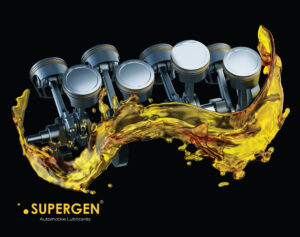Engine oil is essential to the healthy functioning of the engine. The oil lubricates the internal parts of the engine, preventing friction and reducing wear and tear. It also protects the engine from rust, corrosion or any other contaminants. However, due to the heat in the engine, oil breaks down or evaporates over time. Furthermore, there may be small leaks in the engine, causing the engine oil to drip out on the ground. When engine oil levels are low, there is a chance that there might be engine damage. This is because without sufficient engine oil, the engine will not be well-lubricated and thus might make screeching or grinding noises or in severe cases, even seize up completely. In order to prevent this type of serious engine damage, you should check your engine oil levels regularly and keep refilling when the levels are too low. Here is a guide to checking your car’s engine oil level.

What you will need:
- Clean, soft cotton cloth
- Recommended grade engine oil
- Funnel (optional)
- Rag to clean any spills
Follow these steps to check the oil levels in your car’s engine
- Gather all the material you might need to check the engine oil first. This is so that you would not have to leave in the middle of the process to buy or fetch any important item that you require. Use the above mentioned list to check that you have all the necessary things ready beforehand.
- Find and read the owner’s manual of your car. This step is extremely important, since you need to know the structure and the basic layout of your engine before checking the oil levels. Furthermore, the owner’s manual will let you know what normal oil levels are, and what type of oil in what quantity is required to keep the engine running well.
- Park your car on a flat, level ground. This is so that the oil level is not affected by the slope or incline of the place the car is parked. Also ensure that there is enough space around the car for you to be able to manoeuvre easily.
- Once the car is parked, it is time to let the engine cool off. One should never check the engine oil level when the oil is very hot, since that can give a wrong reading. Ensure, you wait at least ten minutes after you park the car, so that the oil has a chance to cool down a bit.
- Open the bonnet of the car and examine the engine components. You will spot a dipstick, usually yellow in colour, somewhere in the engine compartment. Since it is important for checking oil levels, the dipstick is generally placed in an easily visible place, around the centre of the bonnet. If you are unable to locate it, you can read your owner’s manual and try to find it using that as a guide.
- Once you have spotted the dipstick, it is time to take it out. It will generally have to be unscrewed or pulled out from the bonnet and this process is fairly simple. If it is stuck too tightly, you can use pliers or a wrench to get it out.
- Once the dipstick is out, you will notice that it is wet all over. This is because when the engine is running, the oil pressure inside causes the whole dipstick to get wet with oil. However, this is not the actual oil level. You should use the clean cotton cloth to wipe it entirely. Ensure that the cloth does not have any dirt on it.
- Once the dipstick has been cleaned, put it back in its place. You can simply place it back lightly in the original position without screwing it on too tightly. This is when the actual oil level of your engine will be marked.
- After a few seconds, take the dipstick out again. Hold it near the light and examine the wet oil marks on the dipstick as well as the indicators that are already present. The dipstick will have a ‘High/Low’ mark or ‘Min/Max’ indicators on it.
- Examine where the oil mark is placed on the dipstick. If it is near the lower indicator, that shows that the oil levels have dropped. On the other hand, if it is nearer to the higher indicator, that shows that there is sufficient oil in the engine. If the oil mark is above the maximum marker, then that shows that there is excess oil in the engine.
- Depending on the oil level on the dipstick, you can decide whether or not you need to top up the engine. If the mark is quite low, it is always safer to fill in a little oil to ensure the levels don’t drop too much.
- When refilling or topping up, ensure you use only the grade and type of oil that is recommended by the owner’s manual. The grade you use to top up should match the existing oil in the engine, to avoid any problems.
- Once the oil has been refilled, place the dipstick back in place. Wait for a few moments and take it out again. Now examine the new mark made by the oil level, to ensure that sufficient oil is not present in the engine. Furthermore, ensure you have not filled in excess amounts of oil.
- After completing this process, you should replace the dipstick tightly. You can wipe off any oil that has been spilt around the engine compartment and close the bonnet properly. The car is not ready to be used again.









